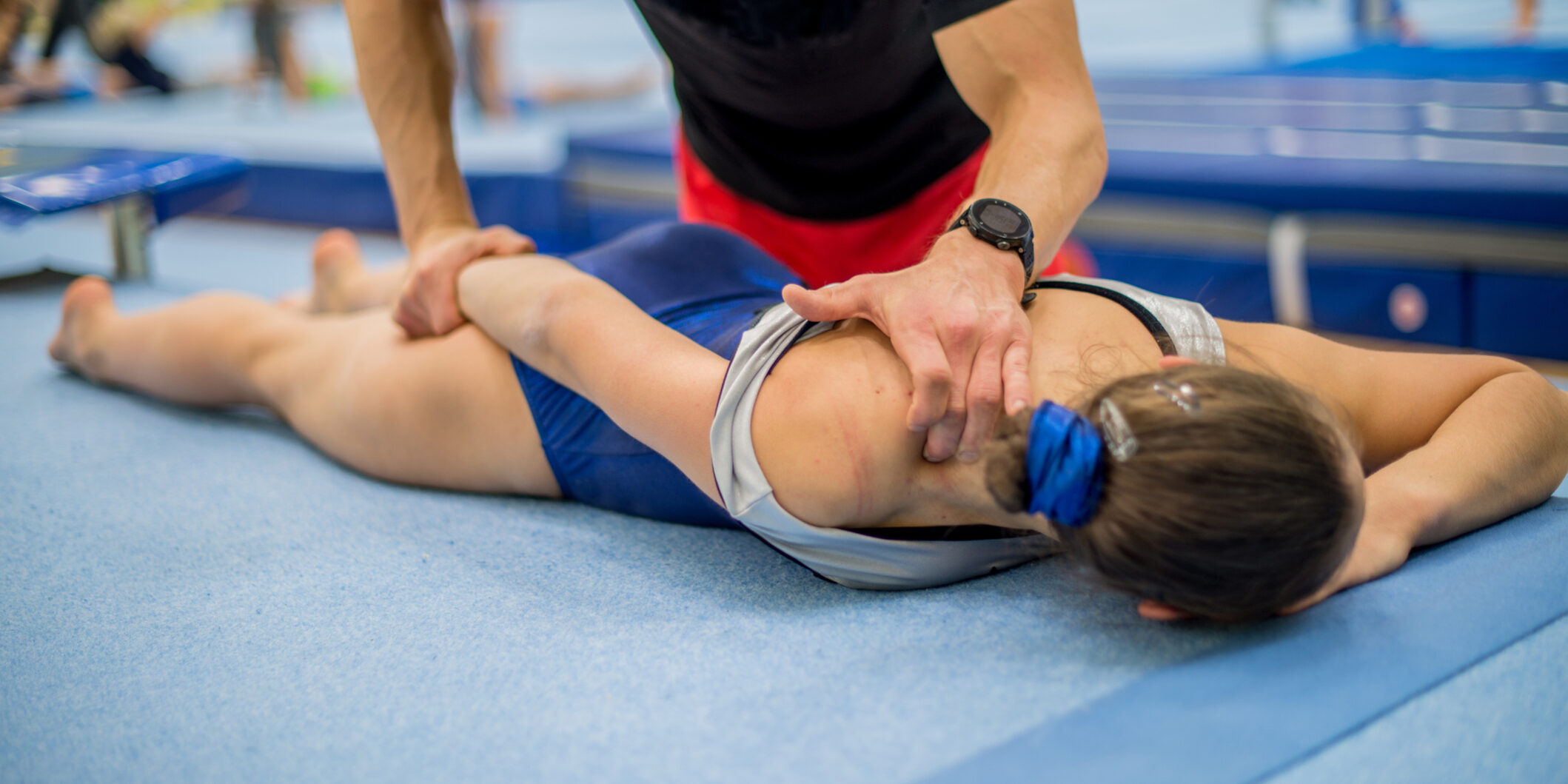
What is it Like to Treat Professional Gymnasts?
We were lucky enough to speak with Beth Riemersma, PT, DPT, FAAOMPT, SCS, ATC, LAT, Director of Grand Oaks Sports Medicine and Rehabilitation in Spring, TX, and physical therapist for Simone Biles. Beth has been a physical therapist for 19 years, an Athletic Trainer for 23 years, and with U.S. Physical Therapy for 5.
How did you get your start?
I was working at Methodist Hospital (their official sponsor) and began treating the gymnasts off and on inconsistently since around 2013. But with 2 practices a day, driving to where we were located, it was just too much. When I opened my clinic, it was closer to where they were training, I had that relationship in place and continued to reinforce that relationship. I would go to the meets to watch them, I built a rapport with the coaches, and 5 years later – that trickled all the way up to USA gymnastics.
How did you find yourself in a position to treat Simone Biles and other gymnasts?
They came to me. My clinic location is close to their gym, and I have a close relationship with their coaches. If a girl is injured, I’ll get a call from the coaches, they’ll come in, and then depending upon what the injury is – I’m reaching out from there to get them going to where they need to be.
How many gymnasts do you treat?
At one time we had 27 gymnasts, so we see a lot.
You were invited to the trials this year. How was it?
In 2021, Simone asked me to go to the trials, and I was only there for the four Houston girls. Now that I’ve done more for USA Gymnastics, this time I covered three events. They learned that I’m also an ATC. So, this year at trials I had the part of being on the floor doing coverage as an ATC, and treatments after. I could treat any of the girls, but we had an agreement that WCC takes priority for me. My priority is on those athletes (5 at trials this year), but I still worked on the other women as well if they needed it.
Can you go through a “Day in the Life” of working at the Olympic Trials?
For trials I was there for 10 days so I helped with trampoline, tumbling, and rhythmic gymnastics before the artistic gymnasts got there and then I switched over and helped with trials. They compete for 2 days.
On training days, we head to the venue early to get everything ready. We have kits on the sidelines, and corners that we sit in. We’re there an hour before the athletes start rolling in. So, if they need hot packs, taping, anything like that we can start. The rest of our team will go out to the floor and then we’re there as an ATC doing sideline coverage, dealing with injuries, taping, etc. Practices are about 2 hours, we clear out and then head into the athlete recovery center (ARC), where we do a lot of hands-on manual treatments. USA Gymnastics also partners with physicians, so if there is an injury that needs more attention, we set that up as well.
After we do recovery with the athletes, we get a short lunch in and then head back over to the floor for practice number 2, and it’s the same thing over again. On the day of the meet, they’ll still do a light practice on the day of their competition. We’ll do ARC after that and move on to setting up for competition. We also do lots of trainings on how to respond to injuries, so by the time the competition starts we’re on the floor ready and typically hiding out in a corner.
Can you tell when injuries are likely to occur during their competitions – now that you’ve been watching them for 12 years?
I wasn’t that involved at the start, but after opening this clinic, I got more involved, and I took a deep dive. I can tell if they land wrong. You can pick up on when something is going wrong. I find myself holding my breath when I see that they’re hurting.
How is treatment at competitions different from treatment in the clinic?
During competitions, it really depends on how the gymnast is feeling. For most of them, I’m treating their back and ankles. If they’re doing a floor routine and landed short, then I’m working more on ankles. Or… maybe they landed weird, and their back is bothering them now. It’s almost always something new. I’m doing an evaluation every time. Assessing them asking: How do you feel, how does this feel, what do we need to work on, how did you feel during practice?
What they need can be different too. Knowing that a lot of girls don’t like to tape for bars or beam, but they’ll tape for vault and floor, I’ll be in the corner cutting strips and having everything ready for them so when they come over they can tape their ankles.
What’s it like being on the floor?
On the floor we can’t be distracting, so I try not to mimic the movements of the routines. I have to sit on my hands, so I’m not clapping. When we were at championships, one of the girls was just coming back from a serious injury, and she had an amazing floor routine. Of course, I was crying and trying to hide it.
These girls have my heart. I’m very invested and I feel everything. When they’re happy, when they’re devastated, I’m crying with them. They are amazing gymnasts, but they’re amazing human beings. It makes it that much sweeter, cause they’re such good people, and to see them being able to thrive through the blood, tears, and injuries, and being able to watch them. Now I’m so lucky that I was there on the floor, and I got to watch them, be there with them.
How was it watching Simone Compete at the Olympics?
It looked like she was having fun, really enjoying being there and competing which really made me happy.
How did you feel when you saw Simone limp off the mat and get her calf wrapped?
I was concerned, but honestly knowing that she was in such good hands with the medical team that was with them, I knew she would be taken care of. I just hoped that it was nothing very serious as I wanted her to be able to end this Olympics on her terms.
What was your reaction when you saw her win gold in the team and individual all-arounds?
I may have been crawling on the equipment and there may have been a few tears after the final scores were announced. I am happy that it looked like Simone was having fun and doing this for her and on her terms.
Any final thoughts about working with gymnasts at the professional level?
With gymnastics, you never know what’s going to happen. An athlete could step wrong and suddenly have a torn ACL. These are devastating injuries. The atmosphere at competitions is incredible. The stands were filled, and there was cheering and yelling. It’s great to see everyone come out to cheer on the gymnasts. There were little girls with signs and adults with shirts. It was a great experience.
We would like to thank Beth for sharing her time and experiences with us. It was incredible to hear about her time at the trials. For more information about our partnership model, contact us!

